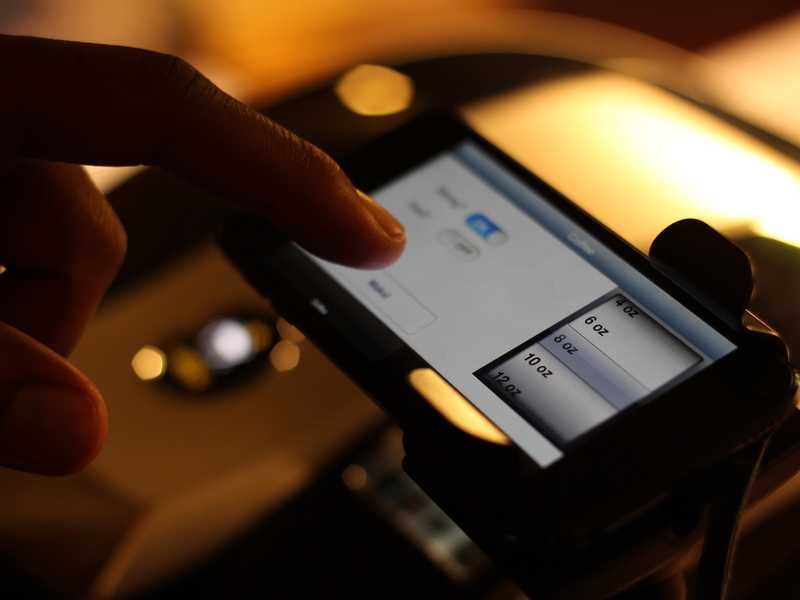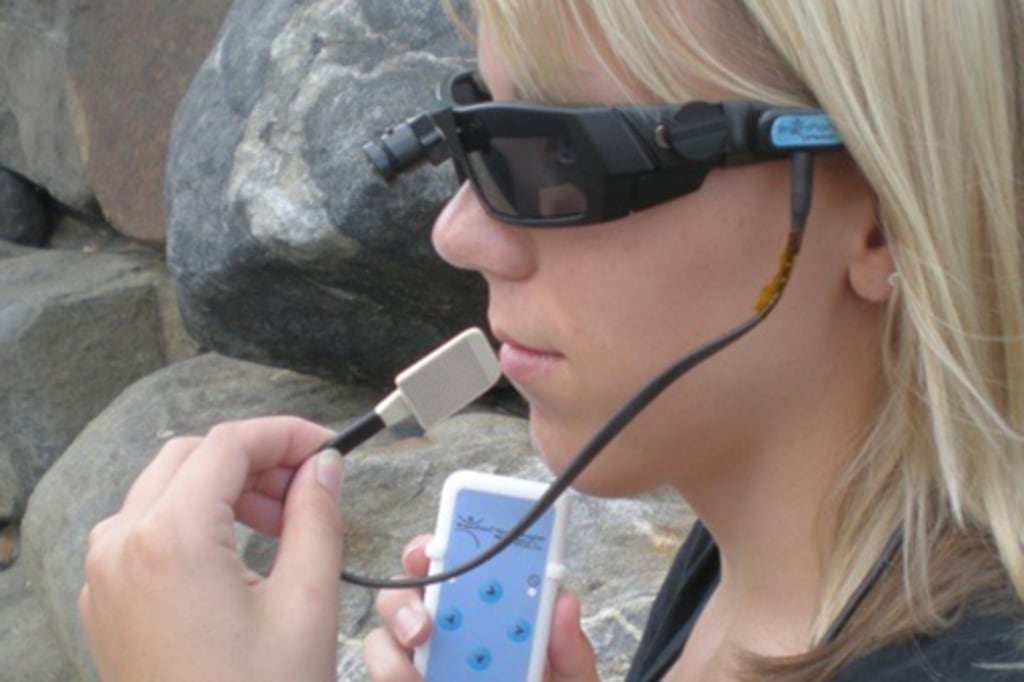Enhance Accessibility with Braille Tools and Notetakers
Enhance Accessibility with Braille Tools and Notetakers
Blog Article
Discover Ingenious Tools Created for the Aesthetically Damaged
The development of innovative devices for the visually impaired stands for a considerable improvement in availability and independence. Technologies such as wise glasses with AI capabilities and mobile applications developed to give auditory descriptions are reshaping daily experiences for customers.
Smart Glasses for Navigation

Smart glasses developed for navigation are reinventing the method aesthetically damaged people connect with their setting. These sophisticated tools utilize a combination of electronic camera technology, fabricated intelligence, and acoustic comments to offer real-time info concerning surroundings. By utilizing challenge discovery systems, smart glasses can signal customers to possible hazards, making it possible for much safer mobility in both unknown and familiar setups.
The assimilation of GPS technology further improves navigating abilities, permitting individuals to obtain auditory directions as they move. This hands-free technique not just cultivates self-reliance however additionally empowers aesthetically damaged individuals to navigate metropolitan landscapes with increased confidence. Additionally, many clever glasses are outfitted with attributes that recognize spots and road indications, providing contextual info that boosts the customer experience.
In addition, the development of these tools is continuously advancing, with companies functioning to improve the accuracy of object acknowledgment and broaden the series of navigational attributes. As clever glasses come to be more available and inexpensive, they hold the prospective to significantly transform life for aesthetically damaged individuals. Ultimately, these ingenious tools stand for an essential action towards inclusivity, offering boosted movement and a higher sense of autonomy for individuals navigating the globe around them.

Mobile Apps for Daily Living
Just how can mobile applications boost the everyday lives of visually impaired individuals? Mobile apps are changing the method visually impaired customers navigate their environments, handle everyday tasks, and accessibility information. These applications supply important assistance via various capabilities, fostering independence and enhancing top quality of life.
Several cutting-edge mobile applications are created particularly for everyday living. For example, applications like Be My Eyes attach aesthetically damaged individuals with sighted volunteers via video calls, allowing them to obtain real-time support with tasks such as reviewing tags or navigating strange rooms. In A Similar Way, Seeing AI, established by Microsoft, makes use of synthetic intelligence to define surroundings, reviewed text, and recognize objects, successfully transforming a smartphone right into an effective tool for everyday aid.
Furthermore, navigation applications customized for the visually impaired, such as Aira and BlindSquare, supply audio-based instructions and environmental information, making it possible for individuals to traverse their surroundings safely and with confidence. Beyond navigating and immediate assistance, mobile apps additionally support organization and job management, with functions that aid users establish reminders, create to-do checklists, and track consultations. In summary, mobile applications work as indispensable sources, encouraging visually damaged individuals to lead even more independent and satisfying lives.
Wearable Technologies for Assistance
Empowerment with modern technology is significantly obvious in the realm of wearable gadgets designed to help visually impaired people. These ingenious devices integrate seamlessly into day-to-day live, improving navigating and supplying important responses to users. Smart glasses outfitted with cams can identify faces and read message out loud, allowing customers to interact more with confidence in social and expert settings.
An additional notable improvement is the usage of haptic feedback systems in wearable devices. These systems use resonances or other responsive signals to share details about the user's environment, such as challenges or changes in terrain, enhancing flexibility and safety. Wearable technologies also include wristbands that link to smart devices, alerting users to notifications through refined resonances, hence enhancing connectivity without dependence on visual signs.
As these technologies proceed to advance, they are not just improving freedom for visually damaged individuals however also fostering a better sense of inclusion in culture. By connecting the void between challenges faced in everyday living and the possibility for autonomy, wearable technologies function as crucial tools in the mission for equality and empowerment for those with visual impairments.
Sound Description Devices
Audio summary devices play a crucial duty in boosting availability for visually impaired individuals, providing them with the ability to engage with aesthetic media. Voice-activated assistive devices. These tools use narrated descriptions of crucial visual components in movies, tv shows, and live efficiencies, ensuring that customers can fully comprehend the context and feelings conveyed via visuals
Audio summary can be incorporated right into various platforms, including streaming services, movie theater testings, and live cinema. Many popular streaming solutions now include audio summary as an ease of access function, permitting viewers to choose it quickly. Along with conventional media, specialized apps likewise exist, offering audio descriptions for art events, galleries, and various other social occasions.
The performance of audio summary depends upon the skill of the storytellers, who should convey aesthetic information succinctly without interfering with the initial audio. Innovations in this area are likewise leading the way for even more tailored experiences, where customers can readjust the level of detail and pacing according to their choices.
Braille Innovations and Instruments
Braille developments and devices have substantially transformed the means visually damaged individuals connect with message and details. Modern developments have actually led to the growth of flexible tools that boost literacy websites and independence amongst users.
Moreover, portable Braille notetakers combine typical Braille input with contemporary performances, assisting in note-taking, scheduling, and document editing on the go. Voice-activated assistive devices. These compact tools frequently feature text-to-speech capabilities, bridging the gap between Braille and acoustic details
On top of that, ingenious Braille printers have arised, permitting customers to create Braille labels, documents, and educational materials efficiently. This accessibility cultivates better involvement in professional and instructional settings, eventually promoting inclusivity.
Furthermore, study into smart Braille modern technologies proceeds to broaden. Devices that include expert system are being explored to give real-time navigation aid and contextual info, enhancing the customer experience in diverse setups. Generally, these technologies show a dedication to equipping aesthetically impaired people with innovation, guaranteeing they can conveniently accessibility and engage with the globe around them.

Final Thought
The advancement of cutting-edge devices for the aesthetically impaired substantially improves independence and quality of life. Smart glasses, mobile applications, wearable technologies, audio description devices, and Braille advancements jointly empower individuals by giving important navigation support, environmental recognition, and boosted reading experiences. These technologies not just foster greater incorporation however also advertise autonomy in everyday activities, inevitably adding to a more easily accessible and equitable culture for visually damaged additional hints people. Proceeded growth in this area holds guarantee for more improvements.
As wise glasses become extra obtainable and look what i found budget friendly, they hold the prospective to dramatically transform everyday life for aesthetically damaged individuals. Mobile applications are revolutionizing the way visually impaired users navigate their settings, take care of everyday tasks, and accessibility information. Applications like Be My Eyes attach visually impaired individuals with sighted volunteers via video calls, enabling them to obtain real-time support with jobs such as reading labels or browsing unknown areas.Additionally, navigation apps tailored for the aesthetically damaged, such as Aira and BlindSquare, supply audio-based instructions and ecological info, making it possible for users to traverse their environments securely and with confidence.The improvement of innovative devices for the visually impaired significantly boosts freedom and top quality of life.
Report this page